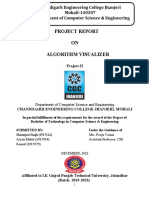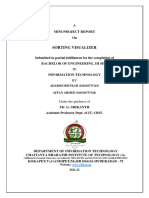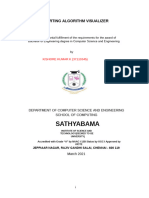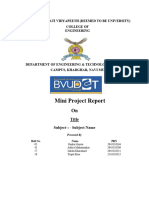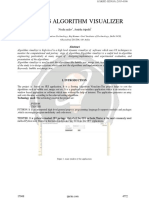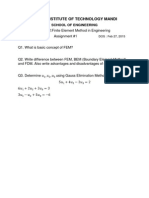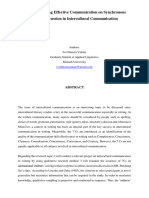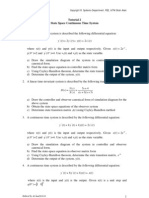Introduction (45-60 seconds)
[Show yourself on camera with a clean background]
I always wondered what’s really happening inside my code when I apply an algorithm.
What if I could actually see those steps unfold in real time?
Hi, I’m Md. Shamsuddoha, and my student ID is ASH2325005M.
My project is called ‘Prime Number and Sorting Algorithm’ an interactive tool designed to help
learners and educators visually explore the logic behind some of the fundamental algorithms in
computer science.
Project Demonstration (2-2.5 minutes)
[Screen recording with webcam overlay in corner]
Let me walk you through the system's functionality, starting with the main hub interface.
[Show main hub with animated buttons]
This is the main interface of the application. It serves as a central hub where the user can choose
different sorting and prime number algorithms.
[Click on Bubble Sort]
Let's start with the Bubble Sort visualizer. Notice the underwater theme with floating bubbles -
this isn't just aesthetic, it reinforces the conceptual understanding of how larger elements 'bubble
up' to their correct positions.
[Demonstrate bubble sort with custom input]
I can input custom arrays or generate random ones. The right panel provides real-time step-by-
step explanations.
�[Show pause/resume functionality and speed control]
The system includes pause/resume functionality and adjustable animation speed, allowing
students to learn at their own pace.
Heap Sort
Heap Sort displays the heap being built, and then elements being extracted to form the sorted
array. Seeing this helps demystify how a binary heap works.
Merge Sort
Merge Sort shows the divide and conquer technique. As the array splits and merges back
together, the visual makes it easy to follow the recursion and merging steps.
[Navigate back and show Quick Sort]
Now here’s Quick Sort, where you’ll notice the partitioning strategy with pivot points being
visually represented—helping users understand how recursive calls work.
[Show Prime Number Visualizer]
The Prime Number Visualizer offers both single number checking and range analysis. In range
mode, you can see both the Sieve algorithm and iterative algorithm marking composite numbers
in real-time.
Insertion Sort
Insertion Sort visualizer illustrates how the array builds up a sorted section from the beginning,
inserting elements in the correct position as it progresses.
Selection Sort
Selection Sort highlights the current minimum and shows how it swaps with the front of the
unsorted section. Simple, clear, and easy to understand visually.
�[Demonstrate Algorithm Complexity Analyzer]
Finally, in the Algorithm Complexity Analyzer students can filter algorithms by category, compare
time complexities, and get detailed performance insights.
TECHNICAL EXPLANATION
[Camera On + Optional code or diagram overlay]
This project is developed in Java using Swing for the GUI. Each algorithm runs in its own Java class
with animation handled using threads.
Limitations and Future Scope
[Back to camera with screen showing the application]
While I'm proud of what I've accomplished, I can improve my project far more.
Currently, my projects visualize prime number and sorting algorithms. But in future I will try to
add more advanced topics such as graph algorithms like bfs, dfs and tree algorithms like b tree,
b+ tree, bst.
OUTRO
[Camera On]
Thank you for watching my project demo. I hope this project helps others see algorithms not just
as code—but as something they can understand, step by step.


























